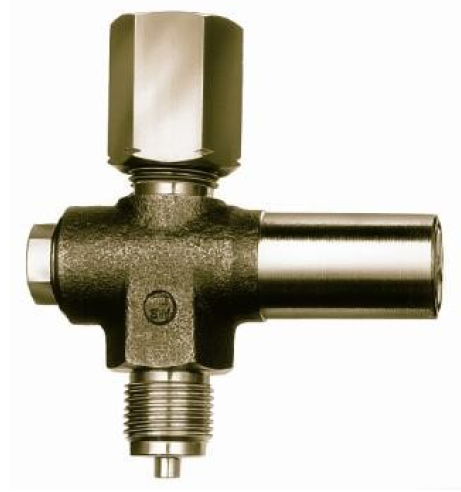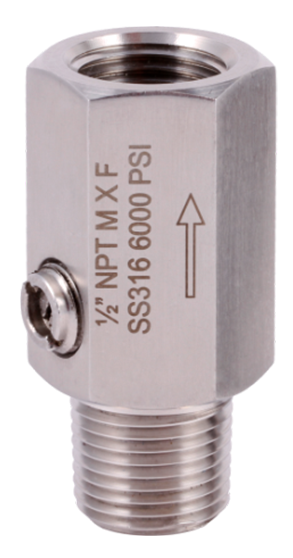Over Range Protection (ORP)
Introduction
Unexpected pressure spikes are a leading cause of instrument failure and unplanned downtime in industrial systems. When a pressure gauge is exposed to pressures beyond its rated capacity, it can suffer permanent damage, calibration drift, or complete malfunction — potentially leading to costly repairs, inaccurate readings, and even safety hazards. To prevent these issues and ensure long-term accuracy and reliability, Over Range Protection (ORP) is implemented as a critical safeguard. ORP devices help protect pressure gauges from overpressure events by isolating or limiting the pressure transferred to the instrument, thereby enhancing system integrity and operational safety.What is Over Range Protection (ORP) for Pressure Gauges?
Over Range Protection (ORP) is a critical safety feature designed specifically to protect pressure gauges from being exposed to pressures beyond their rated range. In industrial environments, unexpected pressure spikes—caused by equipment failure, process disturbances, or rapid system changes—can permanently damage a gauge’s internal components. ORP helps prevent such damage by limiting, isolating, or dampening the pressure that reaches the gauge.
There are several types of ORP devices commonly used in the field:
- Pressure-limiting valves automatically shut off pressure to the gauge once a defined limit is exceeded, reopening only when pressure drops to a safe level.
- Pulsation dampeners and snubbers reduce the effects of pressure spikes and pulsations, improving reading stability and protecting internal components from fatigue.
- Adjustable needle valves allow fine control over pressure dampening to minimize pointer oscillation and mechanical wear inside the gauge.
ORP plays a vital role in:
- Preventing instrument damage from pressure spikes or system transients
- Maintaining long-term accuracy and calibration
- Reduces maintenance and replacement frequency
- Enhancing system safety and operator confidence
Without proper protection, pressure gauges may leak, lose calibration, or rupture—leading to inaccurate readings, equipment downtime, and potential safety risks. ORP valves are often factory-set to a defined shutoff pressure, but some models can be adjusted in the field. The valve typically reopens automatically when pressure drops approximately 30% below the shutoff point. By implementing ORP, engineers can confidently use pressure gauges with narrower ranges for higher resolution, knowing that the gauge will still be protected in the event of occasional overpressure events.


Applications of Over Range Protection (ORP) for Pressure Gauges
Over Range Protection (ORP) is essential in industrial systems where pressure gauges are exposed to fluctuating or extreme process conditions.
It is especially valuable in applications where pressure surges, pulsations, or unexpected transients could damage sensitive gauge mechanisms,
compromise accuracy, or shorten service life.
By integrating ORP devices, operators can prevent overload conditions and significantly extend the lifespan of pressure gauges—especially in
systems that involve dynamic or high-pressure processes.
Common applications include:
-
Reciprocating Pumps
-
Hydraulic Systems
- Measuring instruments are not deformed.
- The system remains within defined safety margins.
- Readings stay accurate over time.
-
Petrochemical and Process Industries
- Reducing pressure during emergencies.
- Extending the service life of costly instruments.
- Preventing system downtime and leakage.
-
Calibration Benches and Test Equipment
Reciprocating pumps generate sharp pressure pulses during each cycle, which can cause pointer oscillation, mechanical fatigue, or even internal rupture of pressure gauges. ORP devices such as pulsation dampeners or pressure limiters smooth out these pulses, ensuring accurate readings and gauge protection.
Hydraulic systems operate at high pressure and fast response times. Gauges in these systems are often exposed to rapid
pressure fluctuations, increasing the risk of overload.
ORP ensures that:
In oil, gas, and chemical process plants, pressure is continuously monitored. Accuracy and operational
reliability are critical, and overpressure is common during process faults, blockages, or sudden valve closures.
ORP provides safety by:
During pressure gauge calibration, instruments can accidentally be overloaded. A built-in pressure-limiting valve ensures that test pressures stay within safe limits.
Why is Over Range Protection (ORP) Necessary?
Pressure gauges and sensors are prone to overpressure in many industrial systems. ORP is a critical safety feature that prevents damage, ensures measurement accuracy, and extends instrument lifespan.
Protection Against Overpressure
Gauges are designed to operate within a defined pressure range. Exceeding this can lead to:
- Permanent deformation of internal components (e.g., Bourdon tubes).
- Leakage or even explosive rupture of the gauge housing.
- Pointer blow-out, which can be dangerous.
A pressure-limiting valve blocks or reduces the pressure to a safe level, protecting the instrument.
Ensures Long-Term Accuracy
Even a brief overpressure event can cause microscopic damage to sensitive internal parts, resulting in:
- Incorrect readings.
- Frequent recalibration needs.
- Reduced trust in process data.
With ORP, accuracy is preserved throughout the instrument’s life.
Reduces Maintenance and Operating Costs
Damaged gauges must be replaced or recalibrated more often, causing:
- Increased maintenance costs.
- Risk of system downtime.
- Operators overlooking faults due to compromised instruments.
Installing the proper ORP device makes the system more robust and cost-efficient.
Prevents Operational and Safety Failures
Pressure readings are often used as the basis for:
- Alarms.
- Automated control systems (PID loops).
- Operator decisions.
If a gauge gives false readings due to overload, it can result in incorrect control, hazardous conditions, or equipment damage. With ORP, gauges remain reliable under demanding conditions, enhancing safety.
Handles Pulsating or Fluctuating Pressures
In systems with rapid pressure changes (such as with pumps and compressors), the needle on a gauge may oscillate violently, leading to:
- Difficulty in reading the value.
- Mechanical wear on moving parts.
ORP devices with adjustable needle valves and pulsation dampers allow the instrument to respond smoothly, giving readable and stable measurements.
Practical Implications for ORP Use
In practice, ORP should be implemented wherever pressure gauges are exposed to dynamic, unstable, or potentially excessive pressure conditions. This includes systems with reciprocating pumps, compressors, hydraulic actuators, or any process that involves sudden pressure changes or pulsations. ORP allows the use of more sensitive (lower-range) pressure gauges without the risk of damage from occasional overpressure events, increasing both measurement resolution and instrument lifespan. It also reduces the risk of downtime, leakage, calibration drift, or gauge rupture. For engineers, maintenance personnel, and system designers, incorporating ORP is a cost-effective way to enhance reliability, safety, and long-term performance of pressure instrumentation.
Relevant Standards & Guidelines
The application of Over Range Protection (ORP) for pressure gauges is supported by several industry standards. ASME B40.100 (Pressure Gauges and Gauge Attachments) explicitly covers the use of protective devices such as snubbers, pulsation dampeners, and pressure-limiting valves. It advises users to evaluate environmental conditions like pulsation, vibration, and pressure spikes when selecting and installing pressure gauges. Similarly, EN 837-1 (Bourdon Tube Pressure Gauges) defines the overload limits for mechanical gauges and emphasizes the importance of protecting gauges from exposure beyond their rated pressure range. When system conditions exceed these design limits, ORP becomes a necessary addition to ensure measurement integrity and instrument safety.
Summary
Over Range Protection is essential for safeguarding pressure gauges against overloading. Devices such as the Mid-West Model 200 (with automatic shutoff) and Model 150 (with pulsation dampening) improve safety, extend instrument life, and reduce costs associated with maintenance and recalibration. ORP should always be considered as an integral part of any pressure measurement system design.
